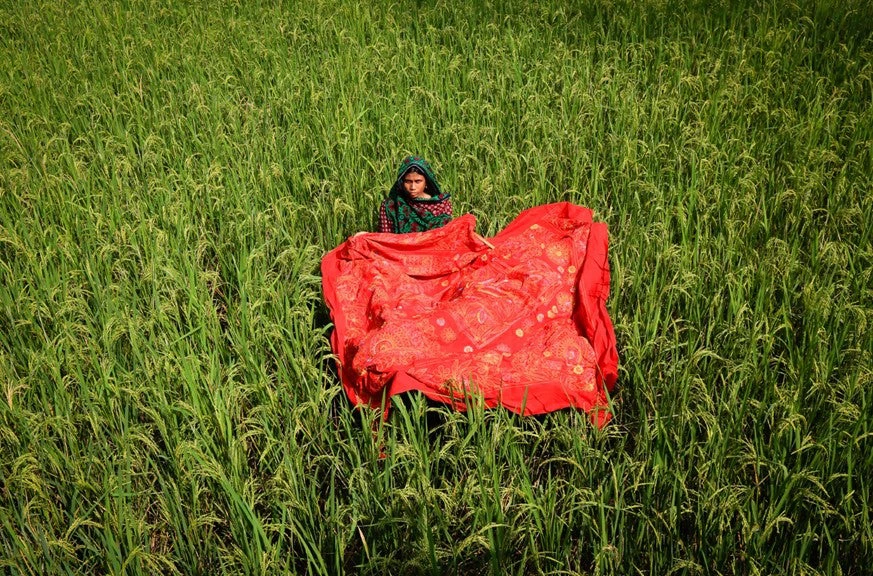 Climate resilience Bangladesh
Climate resilience Bangladesh
What defines the spirit of Bangladesh? For me, its essence lies in its remarkable journey toward climate resilience.
Last year, I traveled to the remote island of Manpura in the Bay of Bengal. Manpura was among the worst affected areas by cyclone Bhola, killing nearly half of its population.
I met Rupa, who was a little girl when the cyclone hit. She lost many of her relatives at sea. I asked her how things are now. “Life is so different,” she said. “Now, we are alerted, we know when the cyclone is coming, we have a place to take shelter, and I am able to save myself and my family.”
Rupa’s story echoes that of millions of Bangladeshis living on the coast.
Bangladesh sits at the frontline of the battle against climate change
Due to its geographical setting, Bangladesh is exposed to a wide array of hazards, ranging from floods, cyclones, storm surges, salinity intrusion, erosion, landslides, to even earthquakes . According to official estimates, cyclone Bhola killed more than 300,000 people. Fast-forward 50 years, cyclones of comparable intensity along the Bay of Bengal resulted in around 3,000 lives lost. Fatalities have declined a 100-fold.
This remarkable progress is the result of Bangladesh’s systematic investment in resilience in the last decades.
In November 1970, Cyclone Bhola made landfall and devastated Bangladesh's coastline. Fifty years later, the country has become a leader in disaster risk reduction
Protecting lives, livelihoods, and assets from disasters has been key to Bangladesh's development strategy. When it became a member-country of the World Bank in 1972, newly independent Bangladesh's first project was the Cyclone Protection and Coastal Area Rehabilitation Project.
Over the years, Bangladesh instituted disaster risk reduction plans and legal frameworks, climate change strategies, enhanced systems and institutions, supported communities, invested in climate-resilient infrastructure, and deployed innovative technologies.
The Government demonstrated that investments in cyclone preparedness, community-based early warning systems, hydromet initiatives, and adaptive delta management, combined with sound structural interventions, save lives, reduce economic losses, and protect development gains.
Investments in climate change adaptation and disaster risk management include key protective infrastructure like those in the World Bank-supported Coastal Embankment Improvement Project and Emergency Cyclone Recovery and Restoration Project.
These projects have helped safeguard against floods and cyclones surges, salinity intrusion, coastal erosion, among others. Over 700 km of embankments have been rehabilitated along with protective works and associated infrastructure, resulting in increased agricultural productivity, food security, and job creation.
Other climate adaptative initiatives, such as the World Bank-supported Multi-Purpose Disaster Shelter Project, are constructing and rehabilitating around 1000 shelters and supporting the Cyclone Preparedness Program. Disaster shelters are multi-purpose in a simple yet innovative way.
They have helped save thousands of lives over the years. Throughout the year, they serve as schools and become safe havens during disasters. Earlier this year, during Cyclone Amphan in May 2020, over 2 million people evacuated to disaster shelters.
Bangladesh’s actions are often cited as models for proactively investing in disaster risk management globally

The spirit of Bangladesh, the pulse of this nation, is its story of resilience
Bangladesh is also leading the global climate dialogue. The country was among the first to develop a Climate Change Strategy and Action Plan in 2009 , which has become a blueprint for other climate-vulnerable nations.
In 2015, Prime Minister Sheikh Hasina received the United Nations Champions of the Earth award in recognition of Bangladesh's initiatives to address climate change as part of its social and economic development.
In June 2020, Bangladesh took up the Presidency of the Climate Vulnerable Forum to represent climate-vulnerable nations' interests and help map out a sustainable and climate-resilient pathway.
This is the culmination of decades of hard work to bring climate resilience front and center in the global climate dialogue.
Looking back, it was a catastrophic disaster that brought the world's attention to Bangladesh. Fifty years after that, Bangladesh is again in the spotlight. This time, as a leader of a global climate forum, a model for proactively investing in disaster risk reduction, and an inspiration for all other climate-vulnerable disaster-prone countries.
The spirit of Bangladesh, the pulse of this nation, is its story of resilience.


Join the Conversation
Excellent blog, Swarna, and the progress Bangladesh has made on disaster management and climate resilience is indeed impressive. We look forward to continuing to collaborate with the DRM team on climate resilience in the power sector, where we have already benefited greatly from your expertise!
Nicely narrated the Disaster Risk Reduction activities of Bangladesh.
What a great success story how Bangladesh has turned a disaster in an opportunity and is not the model for resilience, adaptation and disaster risk management. Thanks for sharing with us.
Very impressive blog. Thanks to share the experience and the fact that made our country as a role model in addressing any disaster. We appreciate the extended support of Wotld bank, ADB and other instituations.
How climate resilient are we? While it is true that Bangladesh has remarkable achievement in reducing deaths due to cyclones by building early warning systems, shelter, and organisation for evacuation. It is for cyclones, basically. Yet, rescue, relief and rehabilitation is not probably as good. Besides cyclones, floods, tornadoes, river erosion and fire are other notable disasters. The progress in... those areas are not as significant as for cyclone preparedness. So, I am not sure if we could claim victory across the natural disaster frontier. Now, if we come to the climate change preparedness, there are few major concerns apart from cyclones: sea level rise, flooding, drying up of rivers feed by glaciers, draught, agricultural adaptation, public health related preparedness, etc., add those on top of the one of the extreme overpopulation in the world. We have made significant progress in agricultural productivity, during the liberation war in 1971 some in the Nixon administration said we would be a basket case (bottomless basket) after independence, of course they then opposed our struggle for freedom, but now we are largely able to produce the food we need. However, changing agricultural practices needs time, and despite the competence of our experts and farmers it would be near impossible to keep pace with the climate change on this frontier. I don't see any significant progress, or even plan, to address the sea level rise, which may engulf 60-70% of the total land mass. The rivers are the lifeline for the country but almost all of those are trans-boundary, and we are downstream, so kind of at the mercy of India and Myanmar, one could not expect a worse situation than this. And there is almost no planning or initiative for the long term to address those. For health, we probably have one of the worst public health systems/facilities in the world. We do have national disaster policy and plan, climate change related plan but very little specific initiatives or real, effective mainstreaming efforts on these are evident. It is also mention-worthy that coastal embankments and infrastructures are considered as a main reason for decades-long water logging and destruction of river systems in the South-West of the country. I would also like to add that in the search for the golden goose of 'economic development' focus is on industrialisation. Which is not bad if done with limits but it is being done recklessly, ignoring environmental and social consequences; related laws and rules are routinely violated. But what is the outcome? For the RMG industry (dyeing, printing, washing, etc) we have polluted the rivers and environment to such an extent that soon the cost of health and other care will surpass the benefits, if that has not already happened. We are also using agricultural land and ecologically critical areas for industrialisation. So, How climate resilient are we? I am not an 'expert' on these issues and forming my opinion based on what I know so far. Yet, in my opinion, not much.
Read more Read less